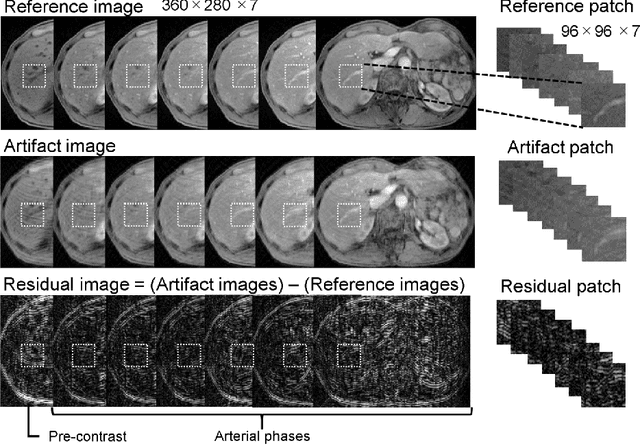Method for motion artifact reduction using a convolutional neural network for dynamic contrast enhanced MRI of the liver
Paper and Code
Oct 03, 2018
Purpose: To improve the quality of images obtained via dynamic contrast-enhanced MRI (DCE-MRI) that include motion artifacts and blurring using a deep learning approach. Methods: A multi-channel convolutional neural network (MARC) based method is proposed for reducing the motion artifacts and blurring caused by respiratory motion in images obtained via DCE-MRI of the liver. The training datasets for the neural network included images with and without respiration-induced motion artifacts or blurring, and the distortions were generated by simulating the phase error in k-space. Patient studies were conducted using a multi-phase T1-weighted spoiled gradient echo sequence for the liver containing breath-hold failures during data acquisition. The trained network was applied to the acquired images to analyze the filtering performance, and the intensities and contrast ratios before and after denoising were compared via Bland-Altman plots. Results: The proposed network was found to significantly reduce the magnitude of the artifacts and blurring induced by respiratory motion, and the contrast ratios of the images after processing via the network were consistent with those of the unprocessed images. Conclusion: A deep learning based method for removing motion artifacts in images obtained via DCE-MRI in the liver was demonstrated and validated.
 Add to Chrome
Add to Chrome Add to Firefox
Add to Firefox Add to Edge
Add to Edge